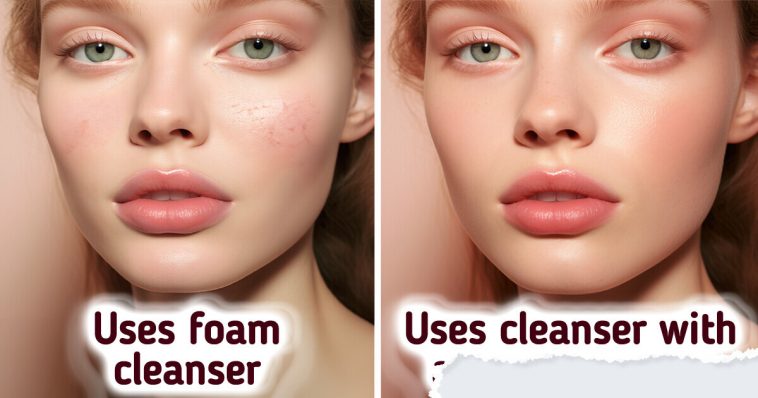Your skin encounters fresh difficulties, such as dryness, inflammation, and heightened sensitivity, when the temperature drops. Here are eight must-know dermatologist advice for dealing with typical cold-weather skin disorders that can help you maintain healthy, beautiful skin.

Dr. Ahmed recommends modifying your skincare regimen in response to seasonal variations since your skin undergoes natural changes throughout the year. She recommends making one little adjustment: instead of using a serum containing vitamin C or hyaluronic acid in the summer, try using a moisturizer with the same elements in the autumn and winter. Because of their lightweight nature, serums may not be able to hydrate enough when the weather becomes dry.
Choose a thicker, more hydrating vitamin C product to use first thing in the morning. Your skin will be better able to withstand environmental aggressors like pollution if you do this. For extra hydration and protection, use sunscreen afterward.
Alternatively, you might use your usual serum first, and then a moisturizing sunscreen. If your skin becomes greasy or clogged easily from applying too many products, this method can work for you.
2. Two hidden components are there.

According to Dr. Ahmed, a lot of her patients think that hyaluronic acid, since it retains water, is the greatest thing to use to keep their skin from drying out in the cooler autumn weather. But hyaluronic acid is already present in our skin, she says. She suggests including a niacinamide (vitamin B3) moisturizer into your regimen when the weather turns cold. Niacinamide keeps skin from drying out and irritating by regulating sebum production and decreasing water loss.
In cases when your skin becomes red or flaky, ceramides—fats that aid in maintaining a strong skin barrier—can be of assistance. For these reasons, it may be best to use a product that combines ceramides with niacinamide.
3. switch to a cleaner that works better in colder climates.

The chemicals used to create foam in cleansers can strip the skin of its natural oils, which is why Dr. Ahmed dislikes them. In her opinion, a creamy cleanser is preferable so as not to strip the skin of its natural oils. She recommends using a little amount of simple moisturizer with your foamy cleanser to alleviate the tight, dry sensation, especially if you’re trying to save money.
Hyaluronic acid might be a great alternative to your present cleanser after it’s finished. Even though they are mild and soothing, they effectively remove sunscreen and makeup.
People only use water in the winter or after they’ve worn makeup for the day because they think washing their faces first thing in the morning might be too drying for their complexion. In Dr. Ahmed’s opinion, cleansing is crucial for the appropriate absorption of serums and moisturizers, thus he disagrees. Sweat, filth, and grime may accumulate on the skin overnight, so it’s best to wash in the morning as well. The best option is a mild, creamy cleanser that won’t dry out your skin.
4: Retinol is best used at night, not first thing in the morning.

Exfoliating acids like as glycolic, salicylic, and lactic acid, and ingredients like retinol, which encourages the growth of new skin cells and lessens the appearance of fine lines, hyperpigmentation, and acne, may be rather irritating if used excessively. These creams may increase skin dryness, which is already a problem in colder temperatures.
Applying a little moisturizer 30 minutes before to utilizing products containing these active components is Dr. Ahmed’s recommendation for autumn and winter, particularly for sensitive skin. This forms a delicate shield that keeps the products from irritating the skin while they do their job.
Because it makes your skin more photosensitive, retinol is best avoided when used first thing in the morning. When taking retinol, it is very important to protect your skin from the sun, so be sure to wear sunscreen before going outside.
5. Utilize antioxidants.
The skin’s defenses against environmental aggressors, such as pollution, may be bolstered with antioxidants, especially during the winter months.
Keep an eye out for moisturisers that include ferulic acid, vitamin C, and vitamin E in them. To protect your skin from harm and maintain its health, these might be useful.
6. switch up your pillowcase more often.

In addition to a normal cleaning regimen, Dr. Ahmed suggests washing your face or bath towel often and switching up your pillowcase every 2-3 days.
Helps keep the skin’s protective barrier in good condition. Why? Spot treatments containing salicylic acid or benzoyl peroxide may aggravate and dry up sensitive skin, so it’s better to avoid using them if you get breakouts in the autumn or winter.
7. Stay away from scented goods.
Fragrances and essential oils used in skincare products have the potential to irritate the skin of certain individuals, particularly those who suffer from reactive or sensitive skin. Assuming you have no problem with scented items in the cold, that’s OK.
Nonetheless, not everyone will feel the same way. This is the time of year when people are often the most easily irritated and sensitive. Some people are remain sensitive to smells, even after rinsing off things like cleansers.
8. As you go through the steps, decrease the proportion of components.

During winter, you may still get the advantages of active ingredients while reducing discomfort by reducing the proportion you use.
For example, after using a glycolic acid toner with a concentration of 5-7%, you may want to switch to one with a lower concentration. Retinol is no different; it exacerbates dry, irritated skin in colder climates.




